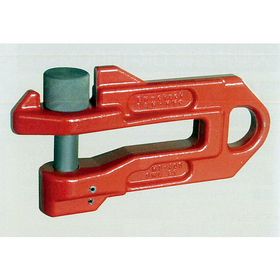Introducing a simple and economical cable suspension method; a U-track suspension system applicable to all sizes.
This is an introduction to the installation accessories for the fabric duct system "DuctSox." The "cable suspension method" is simple, economical, and can be used with all types of fabric. It consists of cables, turnbuckles, and mounting hardware. The "aluminum U-track suspension method" features openings at the top and bottom, making vertical suspension from the top easy and ensuring secure installation of the DuctSox from the bottom. 【Suspension Methods】 ■ Cable Suspension Method ■ Aluminum U-Track Suspension Method *For more details, please refer to the PDF document or feel free to contact us.
Inquire About This Product
basic information
【Cable Suspension Method Cable Material】 ■ Zinc-plated wire ■ Stainless steel wire (SUS316) ■ Plastic-coated steel wire *For more details, please refer to the PDF document or feel free to contact us.
Applications/Examples of results
【Usage】 ■Factory Equipment *For more details, please refer to the PDF document or feel free to contact us.
catalog(1)
Download All CatalogsCompany information
Founded in 1943 as Fukumaki Iron Works, we established Japan Magnetics Co., Ltd. in 1983 by separating the magnet division from our predecessor, Fukumaki Machinery Manufacturing. Since then, we have been engaged in research and development for over 30 years, focusing on the development and manufacturing of permanent magnets and electromagnets used for separating materials such as iron powder and aluminum. ● Innovative, Extra-Large Ceiling Fans We began selling HVLS fans in September 2014. Have you heard of the term "HVLS fan"? HVLS (High-Volume, Low-Speed) fans are a new concept in air conditioning equipment that did not exist in Japan before. They are installed on the ceiling and rotate large blades slowly to distribute a large volume of air throughout indoor spaces. When combined with existing air conditioning systems, they can lead to energy savings of 20-30%, attracting attention worldwide. The idea was conceived by a venture company in the United States to address the decline in milk production due to summer heat, and it appeared on the market in 1998. Since then, they have been adopted in manufacturing plants and commercial facilities, with sales exceeding 100,000 units worldwide.












